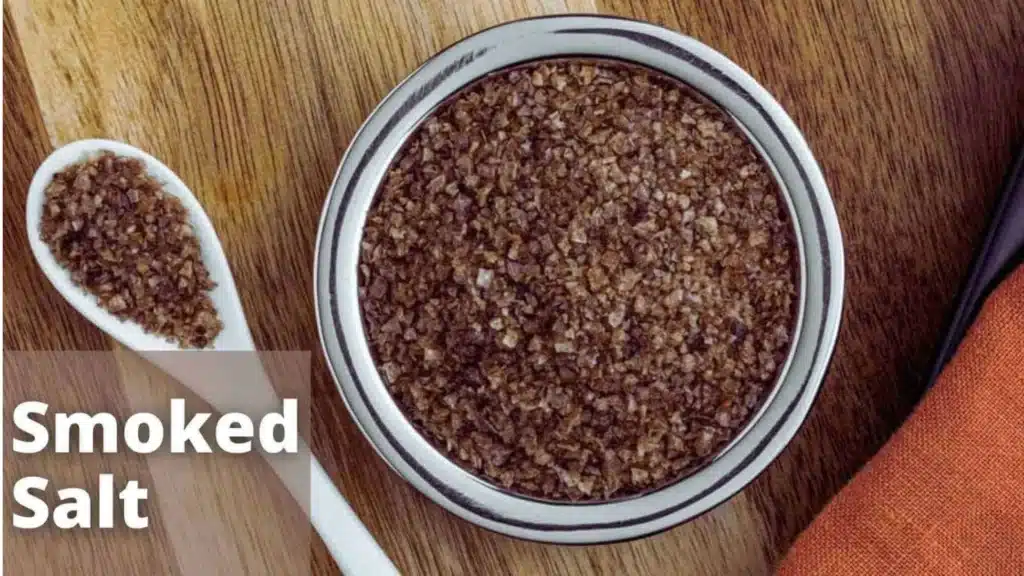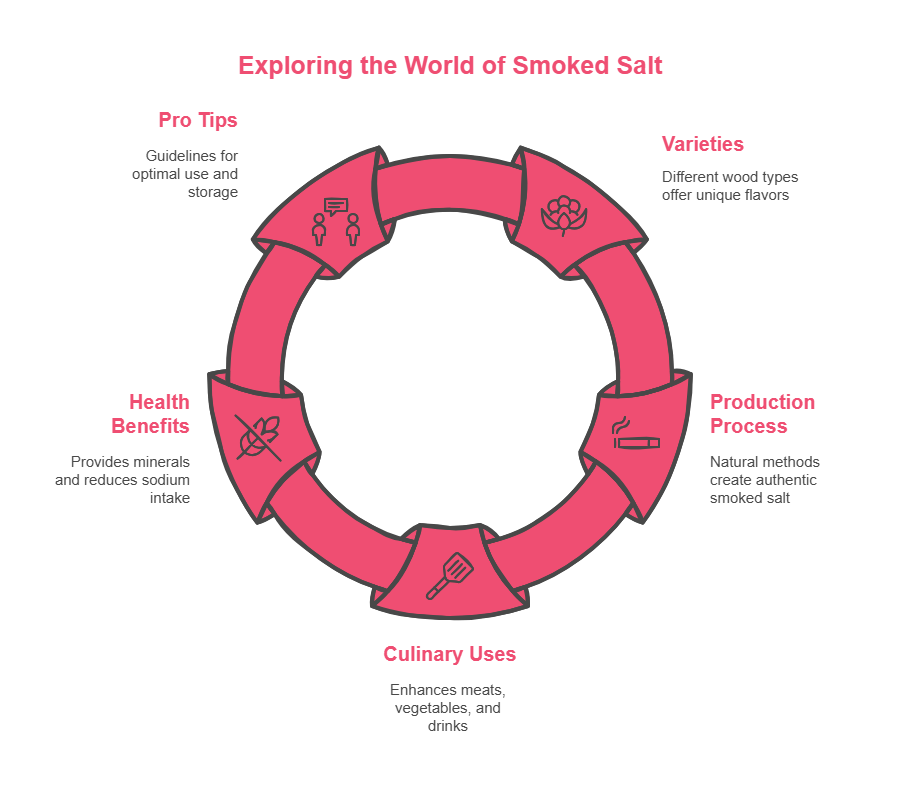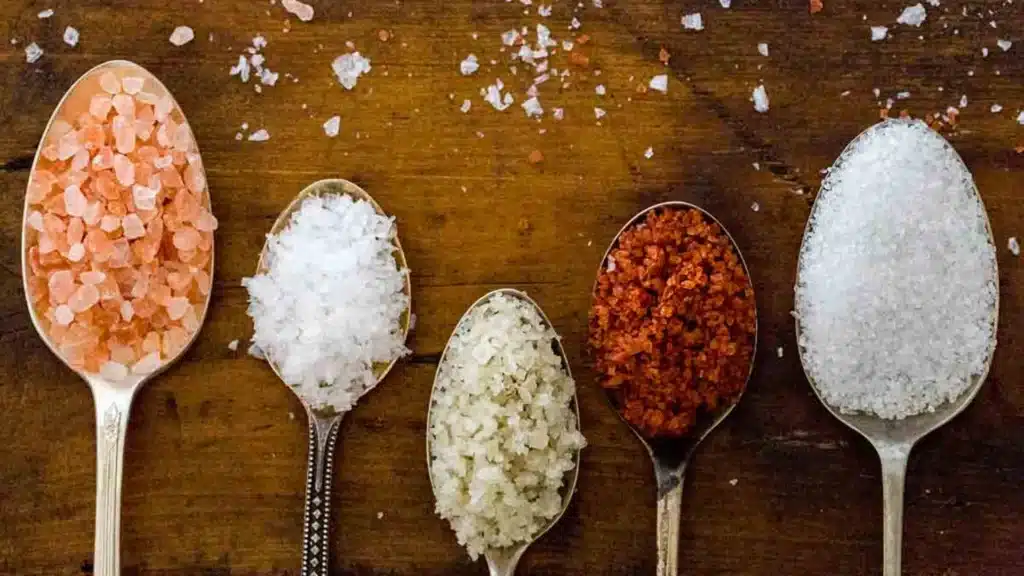
Smoked salt is more than just another bottle on the spice rack; it’s the spark that wakes up your palate. One sprinkle fills your dish with the round, gentle kiss of wood fire, turning simple food into an unexpected adventure. Picture a well-charred steak, a tray of caramelized carrots, or the rim of a cocktail, all whispering that deep, campfire warmth and the only change is the flick of your wrist.
Today, smoked salt isn’t just a niche gourmet product, it’s a fast-growing favorite worldwide. The global smoked salt market, valued at approximately USD 130.62 million in 2025, is expected to reach USD 216.87 million by 2035, reflecting a steady 5.2% CAGR, driven by its popularity as a natural flavor enhancer in health-conscious cooking. [1]
At Sobaan Salts, our mission is to bottle the most honest woodsy notes that nature offers. That’s why home cooks, professional chefs, and anyone who reads a nutrition label trusts our smoked salt to give a big flavor without the extra sodium. In the paragraphs that follow, we’ll unwrap the secrets behind smoked salt: what it really is, the craft that brings it to life, the most-loved styles, and simple hacks for making it the star of your own kitchen.
Table of Contents
What Is Smoked Salt?
Smoked salt is a natural sea salt infused with smoky flavors from slow-burning wood. Unlike artificially flavored salts, authentic smoked salt is created by exposing coarse salt to wood smoke for hours (sometimes days). This process gives it a rich, aromatic flavor that blends saltiness with deep, smoky undertones.
Analysis reveals over 20 distinct volatile compounds, including phenols and aldehydes, which contribute to its bacon-like umami and smoky depth. These flavor notes can vary by 30–50% depending on smoking conditions, making each batch unique. [2]
It’s a healthier alternative to artificial smoke seasonings and is widely used in both professional kitchens and home cooking.
Explore: Types Of Salt For Cooking
Did You Know?
Smoked salt contains no artificial additives. It’s simply natural salt and pure smoke flavor.
How Is Smoked Salt Made?

The process of making smoked salt is as fascinating as its taste. Here’s how it typically works:
- Choosing the Base Salt – Most commonly, coarse sea salt or kosher salt is used since it absorbs smoke better.
- Smoking Process – The salt is spread in thin layers and placed in a smoker or chamber. Wood chips (such as hickory, mesquite, or applewood) are burned slowly, and the smoke infuses into the salt crystals.
- Duration of Smoking – Depending on the desired flavor, the process can last from 12 hours to several days. Longer smoking means deeper, bolder flavor.
- Cooling and Packaging – Once smoked, the salt is cooled and packed to preserve its natural aroma and taste.
This natural method makes smoked salt a clean, chemical-free option for adding flavor.
Popular Varieties of Smoked Salt

Different wood types produce different flavor profiles. Here are the most popular varieties:
Wood Type | Flavor Profile | Best Used For |
Hickory Smoked Salt | Strong, bold, and hearty | Meats, burgers, BBQ ribs |
Applewood Smoked Salt | Mild, slightly sweet, and fruity | Vegetables, seafood, salads |
Mesquite Smoked Salt | Earthy, deep, and intense | Grilled foods, marinades, roasted nuts |
Alderwood Smoked Salt | Subtle and balanced | Chicken, pork, soups, and baked dishes |
Oak Smoked Salt | Classic smoky richness | Bread, cheeses, and slow-cooked meals |
Each variety offers a different experience making smoked salt a versatile pantry essential.
Why Is Smoked Salt Important?
Smoked salt is more than just a flavor enhancer. It provides:
- Gourmet Taste: Adds depth and complexity to simple meals.
- Natural Alternative: A healthier replacement for liquid smoke or artificial flavorings.
- Versatility: Works on meats, vegetables, snacks, baked goods, and even drinks.
- Culinary Creativity: Encourages experimentation with flavors in modern cooking.
And it’s not just chefs taking notice. Surveys show that 62% of consumers in the U.S. and Europe view smoked salt as a healthier alternative to regular salt, thanks to its natural minerals and lack of additives. For people who want restaurant-style meals at home, smoked salt is a game-changer. [3]
How to Use Smoked Salt in Everyday Cooking
Smoked salt fits seamlessly into almost any dish. Here are some ideas:
1. Enhancing Meats
- Grilling: Sprinkle on steaks, chicken, or pork before grilling.
- Marinades: Mix smoked salt with olive oil, garlic, and herbs for an aromatic marinade.
- BBQ Ribs: Hickory smoked salt is perfect for creating a classic BBQ flavor.
2. Elevating Vegetables
- Roasting: Carrots, potatoes, and mushrooms taste richer with a pinch of smoked salt.
- Salads: Add to vinaigrettes or sprinkle lightly for a surprising twist.
Also Read: How To Use Himalayan Salt With Fruits
3. Creative Baking
- Bread: Add smoked salt to dough for subtle earthy notes.
- Cookies: A light sprinkle over chocolate chip cookies adds a sweet-salty balance.
4. Unique Drinks
- Cocktails: Rim glasses for margaritas or mezcal cocktails with smoked salt.
- Bloody Marys: A smoky pinch enhances this brunch favorite.
Discover: The Surprising Health Benefits of Drinking Himalayan Salt Water
Did You Know?
The phenolic compounds in smoked salt show strong antioxidant activity, scavenging up to 70–80% of free radicals in lab tests. That means beyond flavor, smoked salt can help combat oxidative stress in both food and the body. [4]
Health Benefits of Smoked Salt
Besides its flavor, smoked salt also has some benefits:
- Mineral Content: Gourmet smoked salts contain higher mineral levels than refined table salt averaging 2,932 mg/kg calcium and 341 mg/kg zinc. A 5g serving can contribute up to 15% of daily calcium needs, supporting bone health and immunity. [5]
- Reduced Sodium Intake: Because of its strong flavor, you may need less salt overall.
- No Artificial Additives: Pure wood-smoked salt is cleaner than flavored alternatives.
However, moderation is key like any salt, it should be used wisely.
Read More: Health Benefits Of Himalayan Pink Salt
Pro Tips for Using Smoked Salt
- Start with small amounts, its flavor can be quite strong.
- Use the right variety depending on the dish (applewood for seafood, mesquite for BBQ, etc.)
- Store in an airtight container to maintain freshness.
Final Thoughts
Smoked salt is more than just seasoning, it’s an experience. From smoky ribs and roasted vegetables to gourmet cocktails and desserts, this salt adds richness and creativity to any recipe.
During the smoking process, phenolic content and antioxidant activity can increase two to three times, meaning smoked salt not only enhances taste but also gains protective compounds that may help extend shelf life and provide subtle health perks Source: ScienceDirect, Effects of Smoking on Phenolic Compounds. [6]
By experimenting with different varieties, you can discover new ways to transform your cooking.
At Sobaan Salts, we’re passionate about delivering natural, high-quality salts that inspire healthier and tastier meals. If you haven’t tried smoked salt yet, now is the perfect time to bring its smoky magic into your kitchen.
References:
- Serious Eats – The Secret Ingredient: Smoked Salt
- SaltWorks – How to Use Smoked Salt
- Allrecipes – My Easy Trick for Eating Less Meat Throughout the Week
Share This Post
Article By

